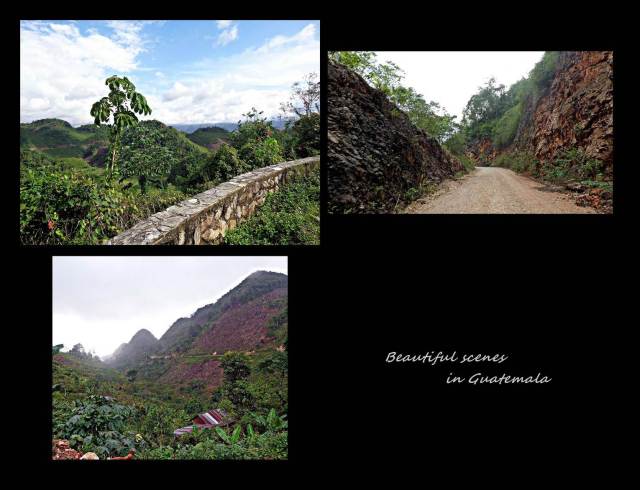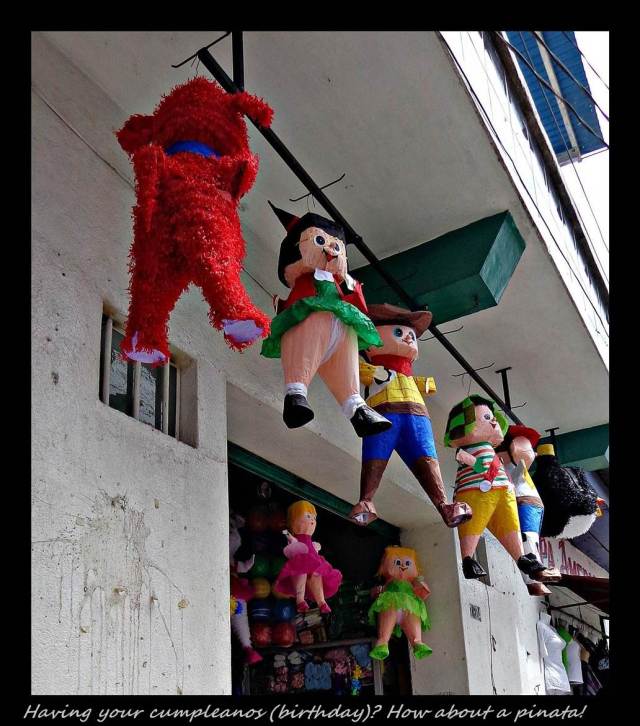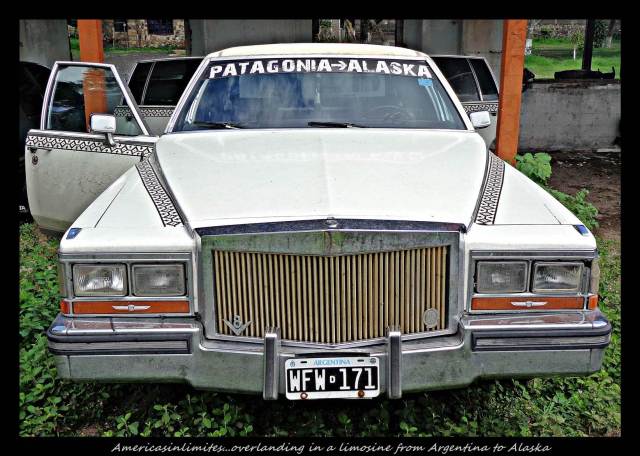19 May 2013
Since we first started reading the Guatemala Lonely planet guidebook somewhere in Mexico, we had decided that this would be a good place to take Spanish lessons. It was much more affordable there than in Mexico and locations such as Lake Atitlan and Antigua seemed nice settings to learn a foreign language. Like many other Spanish Schools, Guatemalan school’s also provide the option to stay with a native family to help with the learning process, something they call homestays. Well, what we didn’t do was stay with a family…what we did do however was found home’s and stayed there!
Our first order of business was getting to Tikal, the tip of the Mayan ruin hierarchy’s. We had skipped Chichen Itza and most others in Mexico, due to the ridiculous costs associated, with the idea of seeing this one. With almost no sweat at all, we crossed into Guatemala on a warm Sunday morning. The campsite next to Lago de Peten Itza was expensive by Guatemalan prices, but it was easy and had a pretty good view. A good idea would have been to draw money at the ATM in the small town next to the Belizean border, but who would have expected that the little tourist town of El Remate wouldn’t have any form of money available. So we got to see a little more of the lake than intended to that day seeing we had to drive all the way around it to Flores. This small island town, which is connected to the mainland by bridge, brought back fond memories of Mozambique’s Island. It seemed rather less crowded than the African version, but sure enough 20 000 people occupy this tiny piece of land that you can drive all the way around in less than 5 minutes. We found a bank, a shop and an icecream to try and beat the heat, before we headed back to Tikal.
We finally arrived at the entrance gate to the Parque Nacional Tikal around 12 am, only to be met by a rather argumentative security guards explaining to us that if we were to enter the park at that time and only visit the ruins the following day, we would have to pay for two days. If we however waited until 15h30, we would only pay for one day, which would then include the following day’s visit to the ruins. However hard we tried to explain that that we only wanted to get to the campsite and didn’t have any intention of seeing any other part of the park, nothing seemed to change their minds. The only thing we could do was wait for three and a half hours in front of their gate in about 35 deg C heat. That wasn’t an option and instead we drove the 20km back to El Remate to park in the shady campground we stayed the previous night. We sweated it out for about two hours before it dawned on us that we really didn’t care much for seeing another Maya ruin. It may seem shameless and spoiled, and it probably is, but more old buildings weren’t going to change our lives seeing as we don’t really have a single anthropology bone between the two of us. So, we got in the Cruiser and drove south to Poptun.
Finca Ixobel was a wonderful US standard campsite that had everything two tired and warm South Africans could want. The area’s elevation was slightly higher than that of Tikal and so it was the temperature was cooler. Also, we had finally descended far enough south to meet the rainy season in Central America. Just before we got to Finca Ixobel, it started raining and since then it hasn’t stopped. We were so happy to find a nice campsite that we stayed for almost a week. During our stay we went on one of the hikes where we were literally thrown into the deep (and dark) end of cave. The hike there was 7km after which you descend into a cave. They warn you not to bring stuff that can get wet and to wear proper shoes, but the extent of wetness and danger to your feet wasn’t really apparent. The third step into the cave is into the underground river that runs through it, and that would also be the last patch of dry ground we step foot on for until we got out of the cave. There’s nothing like combining three pretty common fears, darkness, water and small spaces. The trend is called spelunking and what it basically involves is swimming, stumbling and clinging for dear life while making your way along the river with nothing but candles and headlights. I’m not sure if it was the fear about what living creatures or sharp rocks was below me that freaked me out more. Well, that’s what I thought until we got to the end where you get to jump off a waterfall into a giant pool of blackness. Marius was fearless and leaped off the ledge toward the spot where the guide told us there weren’t any rocks without any hesitation. For me it took a little courage, like a truckload more. I did it eventually and was glad to that I overcame the fear…pretty much just as glad to get out of that black waterhole of nothingness. Another confirmation of why you should try and do something every day that scare you, nothing makes you feel more alive.
PS>Becka and Nick, if you read this, please email us, we didn’t download the pictures you took of the spelunking!
After a almost week of not doing too much, seeing strange and scary creatures and flowers and eating some of the best home-baked bread since we left home, we left Finca Ixobel to explore the rest of Guatemala. We drove south toward the Rio Dulce area from where we turned west to a place called Semuc Champey which our guidebook claim to be one of the most beautiful areas to see in the country. On the way there, we slept at the gorgeous hot spring called Finca Paraiso and dove into the lukewarm water along with the rest of the locals. Our trip to Semuc took a rather lengthy detour (almost two quarters of the way back to Finca Ixobel!) due to unforeseen road closure about 50km from our destination. The locals tried to explain something about “problema con personas” which was reason enough not to tempt fate. The alternate road was an arduous trek over countless mountains and through tiny local villages on terrible gravel roads just wide enough to see the kitchen tables inside the houses next to road. We finally arrived at the small town close to Semuc Champey just after dark in the pouring rain. There were no space for camping with a vehicle and ended up sleeping in the parking area of a hostel where we had a not-too-shabby buffet dinner that night. The next morning our hopes of seeing Semuc Champey’s limestone bridge with its turquoise pools when other travelers told us that the park had been closed the previous day due to the heavy rainfall in the area…so much for driving around the whole Guatemala to get there!
The next thing we intended to see in Guatemala and then didn’t (I’m kidding), was the highlands of Guatemala. We drove to the two horse town of Playa Grande right next to the Mexican border. From here we started out on a road that would take us all the way to the highest point in the Guatemalan highlands and down the other side. It was one the most beautiful and sometimes trying roads that we’ve driven especially since our GPS didn’t have a large part of the road and we were driving on faith. We hoped to find place to sleep in San Mateo de Ixtetan but this tiny town filled colorful locals who watched us suspiciously while maneuvering through the narrow streets of their town. We eventually gave up and drove a further 30km to the next small town where we did something we had never done before on the trip…we booked into a hotel. Oh, what joy! There was a warm shower, toilet and kind of soft bed. Best of all we were out of the rain and as we couldn’t make food in the parking lot, we had to eat at restaurant. One piece of advice in the Guatemalan highlands, when in Rome…eat as the Romans. Don’t go and be a tourist like me and order yourself Alfredo pasta with ham…these people have never seen or had any kind of pasta dish. Their version of Alfredo involves a healthy plate of perfectly cooked spaghetti with a few pieces of sliced ham on top. Sure they did add a mushroom that was chopped finer than I had ever seen…and yes I did say ONE mushroom. Marius with his grin and tacos and beef dish were offcoarse having ball. Needles to say, the next morning I had the Desayuno tipico (typical breakfast)!
When we reached Lago de Atitlan we were happy to be on a lower altitude again. The lake was gorgeous with the three volcanoes rising out of the water like ancient gods. We stayed in a beautiful campsite in a town called Panajachel right on the water with a large green lawn with no-one else on the grounds. Here, the indigenous Maya people still live and dress very traditionally. They still speak their language Kaqchikel and the women sell five maize tortillas for Q1 (R2.20/U$0.25) or their colorful sashes that they weave themselves along the street or out of small holes in the wall. The women still wear their traditional outfits consisting of a huipiles or loose-fitting embroided blouse, a corte or piece of cloth that is 5 m long and joined to form a tube which is all held together by the colorful sashes around their middles. We signed up for Spanish classes, we so desperately needed, at one of the two Spanish schools in the town. Homestays (staying with a Guatemalan family) weren’t available and the campsite was rather expensive, so we looked for some alternative accommodation that we may get at a better rate due to the fact that we would be staying for a week. Sometimes blessings come in small packages and sometimes they come in a large, affordable, comfortable apartment with a kitchen, secure parking for the cruiser and a beautiful garden. Apartamentos Sulita will always have a special place in my heart. It was great to have a change of pace and roof over your head..we ended up staying for a whole two weeks! We went for classes in the morning with our teacher Florinda and in the afternoon we could plan elaborate dinners and have afternoon naps after homework offcoarse! The town was really quant and small enough to walk through in an afternoon (if it wasn’t raining) and for a moment there it felt like our own little home. The Spanish went well most of the days and somewhat frustrating other days, but all and all it definitely improved our confidence in using the language.
I can’t say that it wasn’t a slight shock to the system to be out and camping again after Panajachel but luckily you slot back into a familiar routine quite easily. We reached Antigua early enough to do the recommended walking tour around town. It wasn’t quite as clustered as Panajachel and the grid-like layout of the town makes it fairly easy to navigate. We ate cheap streetfood and icecream and topped them off with my new favourite meal called a Pupusa, a tortilla made with maize and cheese. Strangely we saw two different Argentian couples also travelling from Alaska to Patagonia in the opposite direction from us. Lucas and Florencia are travelling with limousine kitted out with everything INCLUDING the kitchen zink! We shared some stories and a common feeling of not always experiencing overlanding as the lenghty holiday most people see it as. Check out their website www.americasinlimites.tv or follow them on facebook AMERICA SIN LIMITES.
Guatemala is a country of valleys and mountains with seriously steep roads, both gravel and tarmac. These mountains and valleys make the nature scenes and vistas breathtaking. When you go in there in the rainy season, expect rain and expect a lot more raining than you would if you’re coming from Africa. The Maya culture still play a very real part in their day to day living and as a whole, they seem very proud of their heritage. The price of living is comparable to that of Mexico and you can still buy a filling dinner for U$3.5 to U$4.






























Hey matertjies!
Ons verlang na jul maar hoop jul avontuur bly so opwindend! Solank jul ook net so nou en dan ook terug verlang!
Liefdetjies
Elizka, Johan (baie jaloers),Nicola en Carli
Hi julle 2, lekker om weer iets te lees van al julle wonderlike ervarings van grotkruipery tot by die mooie Guatemala. Ek vind volgens julle fotos dat dit ‘n skilderagteige land is veral die Atitlan meer. Een van die dae lyk dit my gaan julle al Spaans kan skryf!! Hier alles wel met die familie lede met hier en daar ‘n kwint of kwaal of ‘n probleem (in die RSA is dit altyd ‘n uitdaging sê hulle). Oom Krige hulle terug van Cayman met ‘n groot gesukkel van storms & vliegtuie wat nie kon land nie en gevolglik verpassing van vlugte en dus uiteindelik via Amsterdam terug hiernatoe! Amper 2 dae se gevlieg! Tannie Lida hulle het bietjie gesondheidsprobleme maar vertrek 2 Aug om blomme te gaan kyk in Namakwaland. Fotos vertel dat dit reeds baie mooi is vanjaar. Pa Johan & Ma Joey sal seker hulle eie storie stuur. Die uwe in goeie kondisie en nog instaat om hierdie verslag op te stel! Liefdegroete Tannie Magda
hola!!
how are you doing?! we are Lucas & Flor, the argentinian couple driving the limousine from Patagonia to Alaska 🙂
A big hug from Mexico!! pura vida!! 🙂